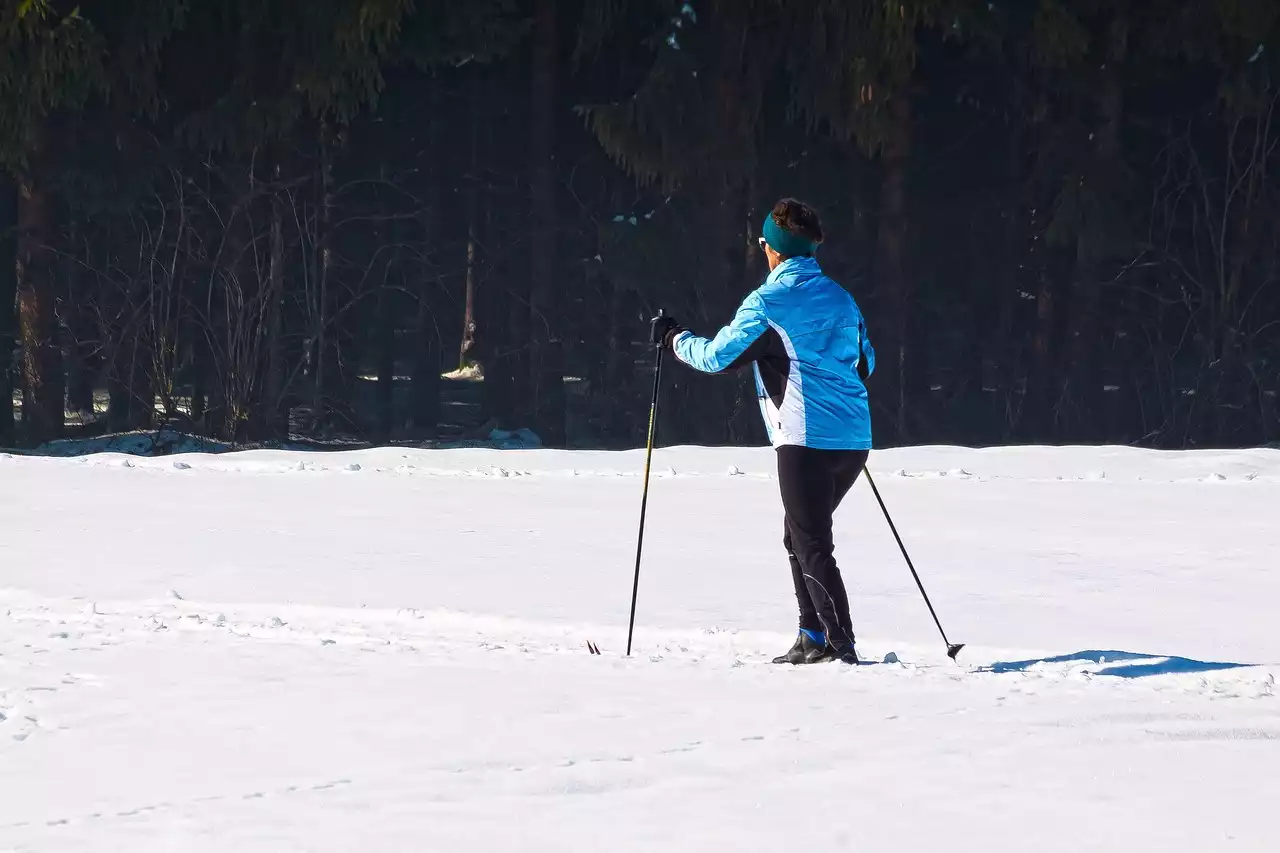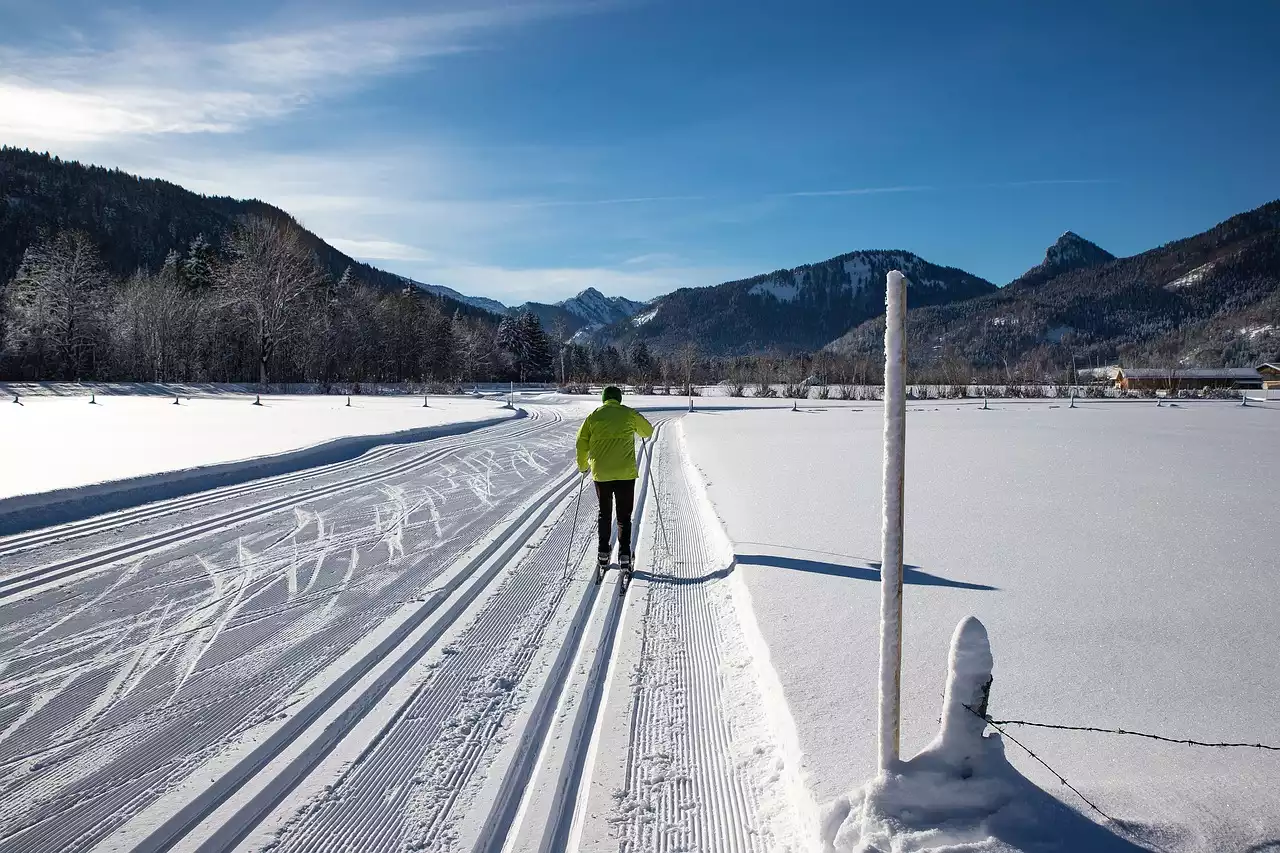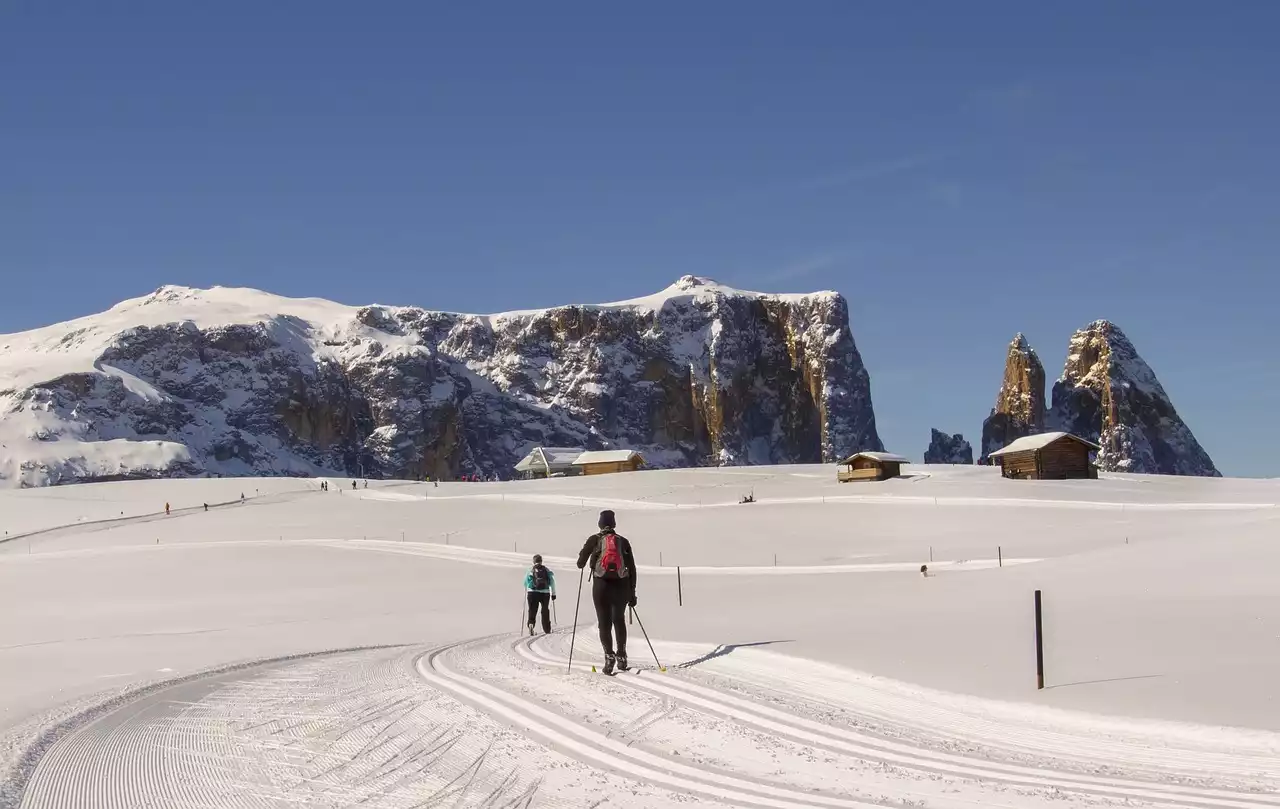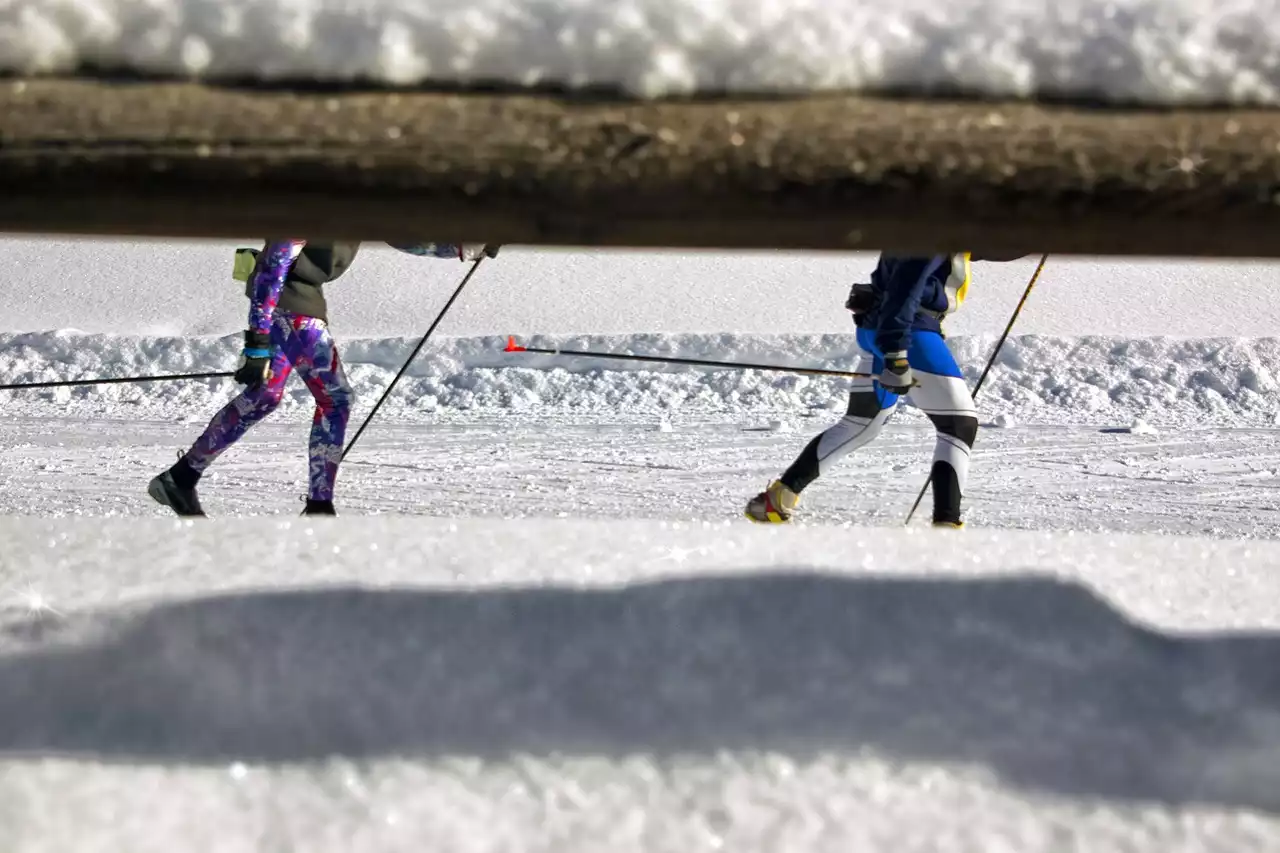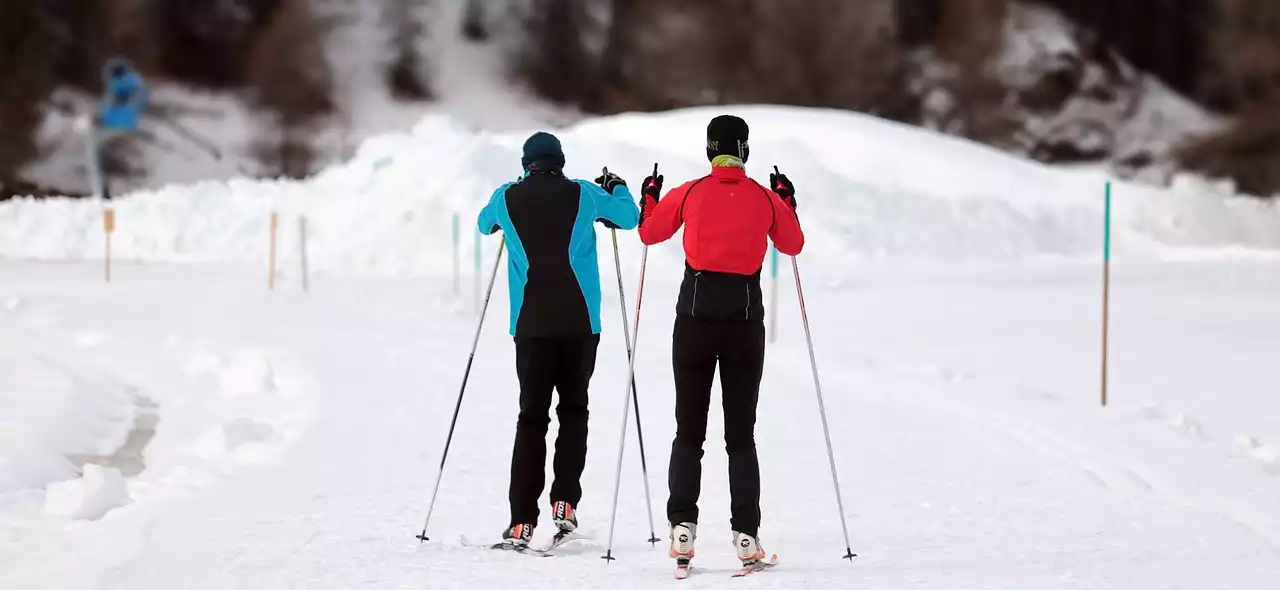Importance of proper technique in cross country skiing
Proper technique is the foundation of successful cross country skiing. Without it, you may find yourself struggling to maintain balance, wasting energy, and not getting the most out of your skiing experience. Learning and practicing proper technique will not only make you a more efficient skier, but it will also help prevent injuries and allow you to enjoy the sport to its fullest.
One of the most important aspects of proper technique is body positioning. It's crucial to maintain a forward-leaning position while skiing, with your weight evenly distributed between your skis. This allows for better balance and control, especially when tackling challenging terrains or navigating tight turns. Additionally, keeping your arms and shoulders relaxed and your core engaged will help you maintain stability and avoid unnecessary strain on your body.
Another key element of proper technique is mastering the art of gliding. The key to efficient gliding is finding the right rhythm and timing. By pushing off with your legs and extending your stride, you can maximize your glide and cover more ground with each stroke. Pay attention to the timing of your pole plants as well, as this will help you maintain momentum and propel yourself forward. Practice these techniques on flat and gentle slopes before progressing to more challenging terrain.
To further enhance your technique, it's important to focus on your footwork. Your weight should be evenly distributed on both skis, with your weight shifting from one ski to the other as you glide. This will allow for smoother and more controlled movements. Additionally, pay attention to the angle of your skis. In general, a slightly wider stance will provide better stability, especially when skiing on uneven or icy surfaces.
Remember, proper technique takes time and practice to master. Start with the basics and gradually progress to more advanced techniques as you become more comfortable on your skis. Don't be afraid to seek guidance from experienced skiers or take lessons from a certified instructor. With dedication and perseverance, you'll soon notice significant improvements in your cross country skiing skills.
Basic cross country skiing techniques
As a beginner, it's important to start with the basics of cross country skiing. These fundamental techniques will provide a solid foundation for developing more advanced skills and improving your overall performance on the trails. Let's explore some of the basic techniques that every beginner should master.
1. Classic Technique: The classic technique is the most common and traditional style of cross country skiing. In this technique, skiers use diagonal strides to propel themselves forward. The skis move in parallel tracks, which are created either naturally or by grooming machines. To perform the classic technique, start with a slight forward lean and push off with one leg while gliding forward on the opposite ski. Alternate your legs and use your poles for balance and propulsion.
2. Skate Technique: The skate technique is a more dynamic and faster style of cross country skiing. In this technique, skiers use a motion similar to ice skating to glide across the snow. The skis move in a V-shaped pattern, with the inside edge of one ski pushing off while the other ski glides. To perform the skate technique, start with a wider stance and push off with one leg while transferring your weight to the other leg. Use your poles for additional propulsion and balance.
3. Double Poling: Double poling is a technique that relies primarily on upper body strength and coordination. It's commonly used in both classic and skate skiing to maintain momentum and increase speed on flat sections. To perform double poling, start with a slightly forward lean and plant your poles in front of you. Push down on the poles while engaging your core and upper body to generate power. Coordinate your pole plants with the movement of your legs for maximum efficiency.
Remember to start with shorter sessions and gradually increase your skiing time as your fitness level improves. Practice these basic techniques on flat and groomed trails before progressing to more challenging terrain. Don't forget to warm up and cool down before and after each session to prevent injuries and aid in muscle recovery. With consistent practice and a positive mindset, you'll soon become a confident and skilled cross country skier.
Advanced cross country skiing techniques
Once you have mastered the basic techniques of cross country skiing, it's time to take your skills to the next level with some advanced techniques. These techniques will not only help you become a more efficient skier but also allow you to tackle more challenging terrains and conditions. Let's explore some of the advanced techniques that will take your cross country skiing to new heights.
1. Herringbone Technique: The herringbone technique is essential for ascending steep hills or challenging terrain. This technique involves placing your skis in a V-shape and walking uphill using a side-to-side movement. To perform the herringbone technique, position your skis at an angle, with the tips touching and the tails pointing outward. Shift your weight from one ski to the other, using the inside edges to grip the snow and prevent slipping. Use your poles for additional stability and balance.
2. Downhill Technique: Downhill sections can be intimidating for many skiers, but with the right technique, you can confidently navigate these challenging terrains. The key to downhill skiing is maintaining control and balance while descending at a faster pace. Start by shifting your weight slightly forward and keeping your knees slightly bent. Use your poles for balance and stability, and focus on maintaining a smooth and controlled movement. Gradually increase your speed as you become more comfortable with the downhill technique.
3. Cornering Technique: Proper cornering technique is crucial for maintaining speed and control when navigating tight turns on the trails. To execute smooth and efficient turns, start by shifting your weight slightly to the inside of the turn. Keep your skis parallel and use your edges to grip the snow. Use your poles for balance and propulsion, planting them on the outside of the turn as you push off. Practice cornering on gentle turns before progressing to sharper and more challenging ones.
4. Skiing in Variable Conditions: Cross country skiing often involves encountering variable snow conditions, such as icy patches or deep powder. To ski effectively in these conditions, it's important to adapt your technique. In icy conditions, focus on using your edges to maintain control and stability. In deep powder, use a wider stance and increase the pressure on your skis to prevent them from sinking. Adjust your technique as needed and be prepared to adapt to changing conditions on the trails.
By incorporating these advanced techniques into your skiing repertoire, you'll be able to tackle a wider range of terrains and conditions with confidence and ease. Remember to practice these techniques on a variety of trails to enhance your versatility as a skier. Don't be afraid to challenge yourself and push your limits – that's where true growth and improvement happen.
Tips for improving balance and stability in cross country skiing
Balance and stability are essential for maintaining control and efficiency in cross country skiing. By improving your balance and stability, you'll be able to glide more smoothly and confidently on the trails. Here are some tips to help you enhance your balance and stability while cross country skiing.
1. Strengthen Your Core: A strong core is the foundation of balance and stability. Incorporate exercises that target your core muscles, such as planks, Russian twists, and bicycle crunches, into your training routine. A strong core will help you maintain proper body positioning and stability while skiing.
2. Work on Your Proprioception: Proprioception refers to your body's ability to sense its position and movement in space. Improve your proprioception by practicing balance exercises, such as standing on one leg or using a balance board. These exercises will help you develop a greater sense of body awareness, which is crucial for maintaining balance while skiing.
3. Focus on Your Footwork: Pay attention to your footwork while skiing. Ensure that your weight is evenly distributed on both skis and shift your weight from one ski to the other as you glide. This will help you maintain stability and control. Additionally, practice skiing with a slightly wider stance to enhance your stability, especially on uneven or challenging terrain.
4. Use Your Poles for Balance: Your poles are not just for propulsion – they can also be used for balance and stability. Plant your poles firmly in the snow and use them as support when needed. This will help you maintain stability, especially when navigating tricky sections or encountering variable snow conditions.
5. Practice Yoga or Pilates: Yoga and Pilates are excellent practices for improving balance, stability, and body awareness. Incorporate these disciplines into your training routine to strengthen your muscles, improve your flexibility, and enhance your overall balance and stability.
6. Progress Gradually: Building balance and stability takes time and practice. Start with easier trails and gradually progress to more challenging routes as your skills improve. This gradual progression will allow your body to adapt and become more stable over time.
Remember, improving balance and stability is an ongoing process. Incorporate these tips into your training routine and practice regularly to see significant improvements. Don't get discouraged if you experience some setbacks – keep pushing yourself and stay committed to your training. With time and perseverance, you'll become a more balanced and stable skier.
Strengthening exercises for cross country skiing
Cross country skiing is a demanding sport that requires a combination of cardiovascular fitness, muscular endurance, and strength. To enhance your performance on the trails, it's important to incorporate specific strengthening exercises into your training routine. These exercises will target the muscles used in cross country skiing, improve your overall strength, and help prevent injuries. Here are some key exercises to include in your strength training program:
1. Squat: Squats are a fundamental exercise for building lower body strength, which is essential for generating power and stability while skiing. Start with your feet shoulder-width apart and lower your body into a sitting position, keeping your knees aligned with your toes. Push through your heels to return to the starting position. Aim for three sets of 10-12 repetitions.
2. Lunge: Lunges target the quadriceps, hamstrings, and glutes – the major muscle groups used in cross country skiing. Start by standing with your feet hip-width apart. Take a big step forward, lowering your body until both knees form 90-degree angles. Push through your front heel to return to the starting position. Repeat on the other leg. Aim for three sets of 10-12 repetitions on each leg.
3. Single-Leg Deadlift: Single-leg deadlifts improve balance, stability, and hamstring strength – all crucial for cross country skiing. Stand with your feet hip-width apart and shift your weight onto one leg. Keeping your back straight, hinge forward at the hips, lifting your non-weight-bearing leg behind you. Lower your upper body until it's parallel to the ground, then return to the starting position. Aim for three sets of 8-10 repetitions on each leg.
4. Russian Twist: Russian twists target the core muscles, which play a significant role in maintaining stability and balance while skiing. Sit on the ground with your knees bent and feet elevated slightly off the floor. Lean back slightly, maintaining a straight back. Twist your torso to the right, then to the left, while keeping your core engaged. Aim for three sets of 12-15 repetitions on each side.
5. Plank: Planks are a great exercise for building core strength and stability. Start in a push-up position, resting on your forearms instead of your hands. Engage your core, keeping your body in a straight line from your head to your heels. Hold this position for 30-60 seconds, gradually increasing the duration as your strength improves. Aim for three sets.
6. Side Plank: Side planks target the obliques – the muscles responsible for lateral stability. Lie on your side, propping yourself up on your forearm and keeping your body in a straight line. Engage your core and hold this position for 30-60 seconds, then switch sides. Aim for three sets on each side.
Remember to start with lighter weights and gradually increase the resistance as your strength improves. It's also important to maintain proper form throughout each exercise to prevent injuries. If you're new to strength training, consider working with a qualified trainer to ensure you're using correct technique and to develop a personalized program that meets your specific needs.
Incorporating these strengthening exercises into your training routine will help you become a stronger and more powerful cross country skier. They will enhance your overall performance and allow you to tackle more challenging terrains with confidence. Don't forget to warm up before each session and stretch afterward to prevent muscle soreness and aid in muscle recovery.
